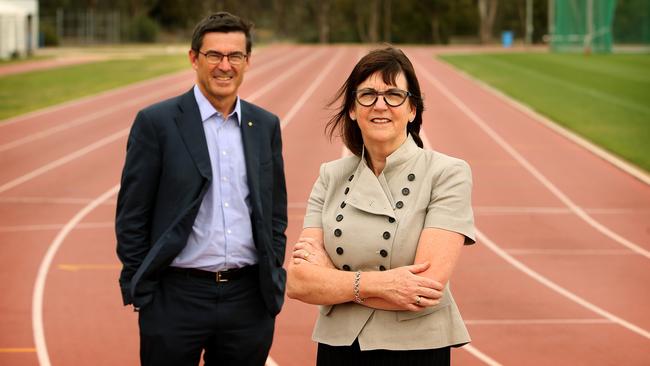State sports institutes reject bid to put them under AIS banner
The state sports institutes have rebuffed an initial proposal to bring them all under the banner of the AIS.

The state sports institutes have rebuffed an initial Australian Sports Commission proposal to bring them all under the banner of the Australian Institute of Sport.
The ASC has argued repeatedly in recent years that efficiencies could be found in the high-performance system by reducing duplication and improving co-ordination between the national and state institutes.
However, it was only when the stoush between ASC chairman John Wylie and Australian Olympic Committee president John Coates erupted at the weekend that it came out the ASC was proposing a merger of all institutes.
In his dealings with Wylie, Coates reiterated he “was opposed to an AIS ‘takeover’ of the other institutes and academies, instead favouring continued and hopefully enhanced co-operation’’.
“I understand that you have since developed your proposal for a national institute system and presented it to a recent meeting of state and territory directors of sport where it was rejected,’’ Coates wrote.
The NSW Institute of Sport’s outgoing chief executive, Charles Turner, said the case for reducing duplication “was not a reasonable argument. Over the last four years the system has been pretty well aligned,’’ he said.
He said at least some of the NSWIS board suspected that “the feds’’ wanted to take control of the $50 million that the state institutes bring in each year at a time when the ASC and AIS budgets are being squeezed. “They don’t want the feds telling them where we should spend our money,’’ Turner said.
West Australian Institute of Sport chief executive Steve Lawrence said WAIS wasn’t necessarily opposed to joining forces with the other institutes but was yet to be convinced that it would lead to a better outcome.
“I am not sure takeover is the right word, but the AIS believes that there should be one governing body for the network, they have a preference for a one-institute system,’’ he said.
However, he said the state institutes were wary because 80 to 95 per cent of their funding came from their state governments.
“We are always open to exploring ways of making the system more effective but we have yet to see any evidence that this would make significant cost reductions,’’ Lawrence said.
“Western Australia is a long way from Sydney and Queensland and our environment is different, so there’s a lot of logic in having local decision-making.’’
Victorian Institute of Sport chief executive Anne Marie Harrison said she was yet to be convinced that one body would be better for the athletes.
“If the AIS can demonstrate that, we should be open to it,’’ she said. “But it’s a really complex business to merge federal and state bodies.’’
A Queensland government spokesman said the ASC proposal did not include enough detail to convince the state ministers that “the creation of a single national high-performance body would have benefits for their athletes’’.
He said it was agreed that the next meeting would consider alternative options to improve the high-performance system.
Acting ASC chief executive and AIS director Matt Favier, a proponent of a merger, said the proposal was “neither accepted or rejected’’.
“It’s not positioned as a takeover but as a partnership,” he said.
“We agreed that more work needed to be done to improve the current system’s alignment and efficiency but we acknowledge that not everyone agrees that a merger is the right approach.’’
Favier also admitted that the ASC could follow the AOC’s lead and drop the longstanding top-five target for the Australian team at the next Olympic Games.



To join the conversation, please log in. Don't have an account? Register
Join the conversation, you are commenting as Logout